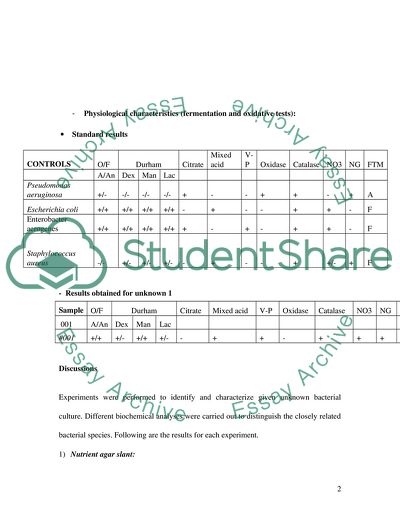Cite this document
(“Biochemical identification of unknown bacteria Lab Report”, n.d.)
Biochemical identification of unknown bacteria Lab Report. Retrieved from https://studentshare.org/biology/1552918-biochemical-identification-of-unknown-bacteria
Biochemical identification of unknown bacteria Lab Report. Retrieved from https://studentshare.org/biology/1552918-biochemical-identification-of-unknown-bacteria
(Biochemical Identification of Unknown Bacteria Lab Report)
Biochemical Identification of Unknown Bacteria Lab Report. https://studentshare.org/biology/1552918-biochemical-identification-of-unknown-bacteria.
Biochemical Identification of Unknown Bacteria Lab Report. https://studentshare.org/biology/1552918-biochemical-identification-of-unknown-bacteria.
“Biochemical Identification of Unknown Bacteria Lab Report”, n.d. https://studentshare.org/biology/1552918-biochemical-identification-of-unknown-bacteria.


